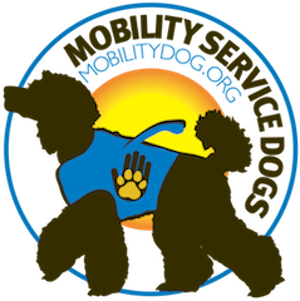What Is a Mobility Assistance Dog? Everything You Need to Know
For people with physical disabilities, mobility assistance dogs are more than just friends; they are partners who can change their lives. People can live more independently, safely, and confidently thanks to these well-trained service dogs. For people who depend on them, mobility dogs are essential, whether they are used for door opening, item retrieval, or physical assistance.
This article describes what a mobility assistance dog is, the duties they carry out, who is eligible for one, and how to start the training or adoption process.
A Mobility Assistance Dog: What Is It?
A service dog is any dog that has been specially trained to perform tasks for a person with a disability. This can include physical, sensory, mental, or intellectual disabilities, according to the American Dog Association Dictionary.
A mobility assistance dog, also called a mobility service dog, is a specially trained animal that helps individuals with physical impairments that affect their mobility. This includes people who use wheelchairs, walkers, or crutches, as well as those with balance problems, muscle weakness, or other conditions that limit movement.
These dogs differ from emotional support animals or therapy dogs. Mobility assistance dogs are trained to perform specific tasks that directly help their handlers with their disabilities and are protected under the Americans with Disabilities Act (ADA).
Common Tasks Mobility Dogs Perform
Mobility service dogs are trained to meet their handler’s specific needs. Some of the most common tasks they perform include:
- Retrieving dropped items (keys, phones, bags, etc.)
- Pushing automatic door buttons
- Providing balance or support
- Helping their handler rise from a seated or fallen position
- Carrying items in a backpack or harness
- Assisting with dressing or undressing
- Navigating around obstacles and tight spaces
In essence, a mobility dog serves as an extension of their handler, offering assistance and promoting independence.
Who Benefits from a Mobility Assistance Dog?
Anyone with a qualifying physical disability that limits major life activities could benefit from a mobility assistance dog. Common conditions include spinal cord injuries, cerebral palsy, multiple sclerosis (MS), muscular dystrophy, Parkinson’s disease, arthritis, stroke, vertigo, and other physical impairments or injuries. Each case is assessed individually. A medical professional or disability advocate can help determine if a mobility dog is suitable for a person’s needs.
What Breeds Make Good Mobility Dogs?
Selecting the right dog for mobility work requires temperament testing and early training. Not all dogs have the right temperament or physical traits for this role. Ideal candidates are typically:
- Large enough to provide stability or support (usually 50+ pounds)
- Strong and healthy with no joint problems
- Calm, confident, and naturally obedient
Why Poodles Make Great Mobility Service Dogs
Standard Poodles are excellent mobility service dogs due to their ideal mix of size, strength, intelligence, and trainability. Originally bred as working retrievers for duck hunting, they are strong swimmers and physically capable, weighing between 40 and 85 pounds. This makes them well-suited for providing stability, retrieving items, and assisting with mobility tasks. Their intelligence ranks among the highest of all dog breeds, enabling them to learn complex commands and adjust to new situations. Poodles are also known for their calm, friendly nature, making them easy to train and reliable in public. Additionally, their low-shedding, hypoallergenic coats are beneficial for individuals with allergies or limited mobility, as they require less cleaning and produce minimal dander.
How to Get a Mobility Assistance Dog
You can get a mobility service dog through a service dog organization such as MobilityDog. Before applying you are welcome to come INFORMATIONAL Virtual Gathering 2nd Tuesday of each month 3:00- 3:45 PM PT to learn more.
Another option is to train a dog that meets the standards to become a mobility service dog. Starting this fall, MobilityDog will be offering assessment sessions and training for dogs that pass assessment to be trained to become a mobility service dog in Pasadena, California.

